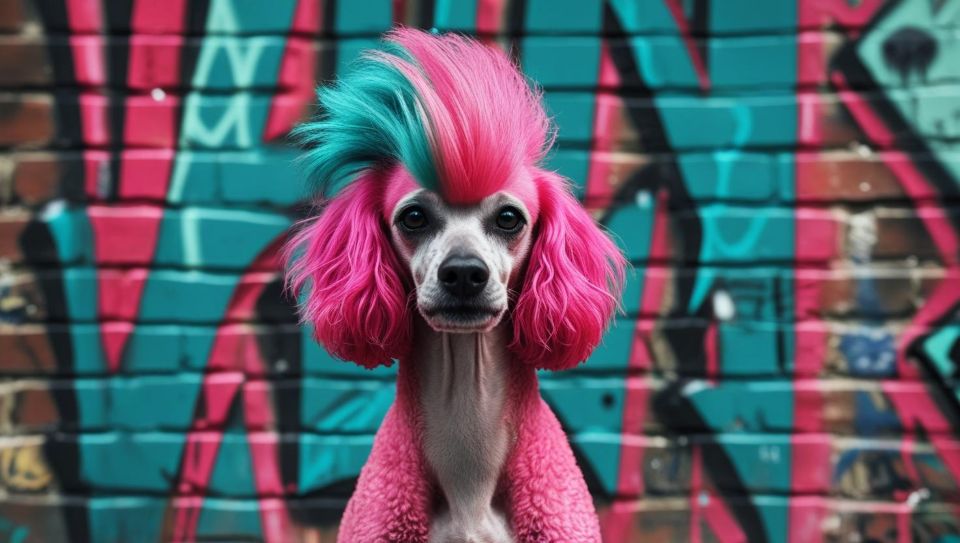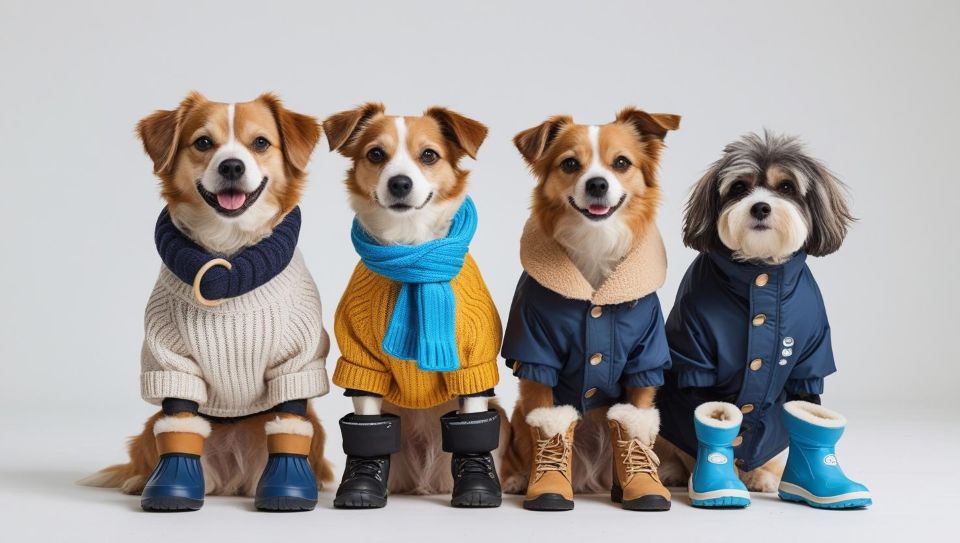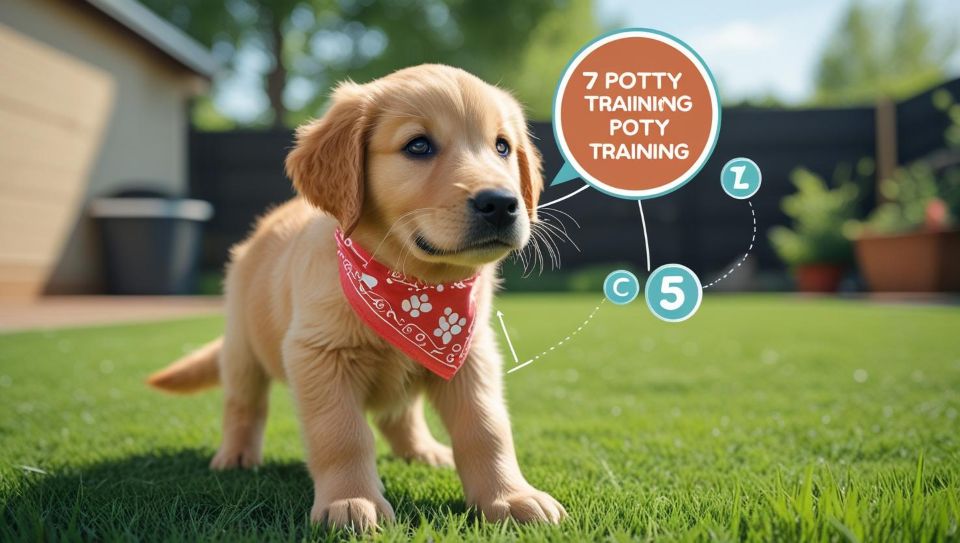Dyeing your dog’s fur has become a popular way for pet parents to show their love and add a splash of fun to everyday life. There’s something undeniably joyful about seeing your furry friend prance toward you with a fresh new “hair color,” tail wagging in excitement. But let’s be clear—coloring a dog’s coat isn’t just about slapping on some dye. It’s a thoughtful process that requires balancing safety, aesthetics, and your dog’s comfort. In this guide, we’ll take a closer look at how to dye your dog’s fur in a way that’s both safe and stylish.
What Is Dog Hair Dye?
Dog hair dye is a specially formulated coloring product designed for canine fur. It allows pet owners to temporarily or semi-permanently change their dog’s coat color for fun, fashion, or special occasions. Unlike human hair dye, dog hair dye features a much gentler formula. It’s pH-balanced to match a dog’s sensitive skin and typically excludes harsh chemicals like ammonia, hydrogen peroxide, or PPD (p-phenylenediamine) that could cause irritation or allergic reactions.
Three Main Types of Dog Hair Dye
| Type | Key Features | Example Products |
|---|---|---|
| Temporary | Washes out after 1–3 baths; ideal for short-term looks | OPAWZ Temporary Color Spray, Warren London Critter Color |
| Semi-permanent | Lasts through 4–8 washes; offers richer color | Top Performance Semi-Permanent Gel |
| Permanent | Color holds for 20+ washes; great for creative contests | OPAWZ Permanent Dye |
These products give pet parents the flexibility to experiment with different looks while keeping their dog’s safety and comfort in mind.
Choosing the Right, Safe Dye Is Step One
When it comes to coloring your dog’s fur, safety should always be the top priority. A dog’s skin is far more sensitive than human skin, and they have a natural habit of licking their fur. Using inappropriate or harsh dyes can lead to allergic reactions, redness, itchiness, and even more serious health concerns. That’s why selecting a safe, pet-friendly dye is absolutely essential.
What Makes a Dog Hair Dye Safe?
Free from Harsh Chemicals
Always avoid dyes that contain toxic ingredients like aniline compounds, heavy metals (such as lead or mercury), or formaldehyde. These substances can damage the skin’s protective barrier, trigger allergic responses, and cause long-term harm to internal organs if absorbed.
pH-Balanced for Dogs
Canine skin has a pH level between 6.2 and 7.4, ranging from slightly acidic to neutral. Choose dyes specifically balanced to match this range to minimize irritation.
Food-Grade Ingredients Preferred
If the product is labeled “edible” or “pet-safe for licking,” it’s a reassuring sign. Since dogs often lick their fur, food-grade ingredients reduce the risk of health issues from accidental ingestion.
Recommended Types of Safe Dyes
Pet-Specific Hair Dyes
These dyes are specially formulated for dogs and other animals. They’re rigorously tested to ensure low irritation and safety. Many reputable pet care brands offer plant-based dyes made with natural extracts, offering peace of mind and gentle results.
Natural Plant-Based Dyes
Colorants derived from beets, spinach, carrots, and other vegetables can be a safer, more natural option. However, these dyes tend to offer lighter color payoff and wash out more quickly—perfect for pet owners looking for a short-term fun makeover.
Temporary Color Sprays
Want a fun new look just for a pet party or holiday event? A temporary color spray is a convenient, low-commitment option. High-quality sprays are easy to rinse off and less irritating—just make sure it’s labeled specifically for pets.
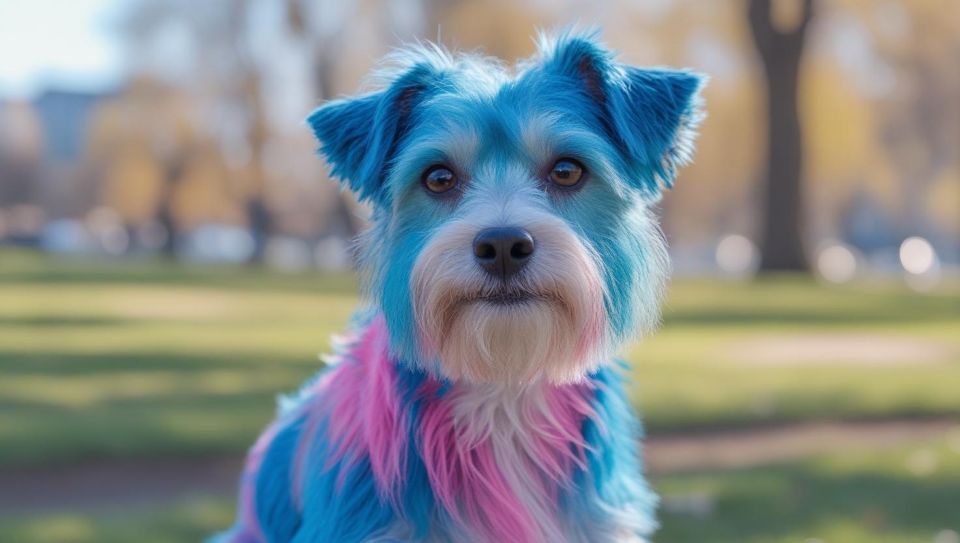
Prepping Your Dog for a Stress-Free Dyeing Session
Before you dive into giving your pup a fresh new look, proper preparation is key. A few simple steps can make the dyeing process smoother, more effective, and way less stressful for both you and your furry friend.
Brush Out the Fur
Start by thoroughly brushing your dog’s coat using a pet-friendly comb or brush. This helps remove tangles, loose fur, and debris. Severely matted hair should be detangled first, as knots can trap dye unevenly and irritate the skin underneath. A smooth coat ensures even color distribution and a safer application.
Clean and Dry the Coat
Give your dog a bath to remove any dirt, oil, or odors from their fur. Always use a pet-safe shampoo and avoid anything with harsh ingredients. After the bath, dry the fur completely—moisture can interfere with how well the dye adheres to the hair.
Gather Your Supplies
Besides choosing a safe, pet-specific dye, you’ll need the following items to stay organized and mess-free:
- Gloves – Keep your hands clean and dye-free.
- Towels – To wipe off any excess dye from your dog’s fur.
- Comb or Brush – Use during dyeing to spread the color evenly.
- Apron – Protects your clothes from stains.
- Treats – Keep your dog relaxed and reward good behavior.
Help Your Dog Relax
Dyeing might be a new and unfamiliar experience for your dog, so it’s natural for them to feel a little anxious. Spend a few minutes bonding with them beforehand—gentle petting and a calm voice go a long way. Let them sniff the tools and become familiar with the process. If your dog shows signs of extreme stress or resistance, don’t force it. Their emotional well-being always comes first.
Step-by-Step Guide to Dyeing Your Dog’s Fur
Ready to give your pup a fresh new look? Follow these detailed steps to ensure a safe, effective, and stress-free dyeing process:
① Mix the Dye According to Instructions
Every dog hair dye product has its own formulation and usage guidelines, so always read and follow the instructions carefully. Proper mixing ensures the right dye concentration and helps prevent uneven color or irritation.
② Section Off the Areas You Want to Color
If you’re only planning to dye specific parts of your dog—like the ears, tail, or a patch on the back—section off those areas before applying the dye. Use a comb to separate the fur, and cover the rest of the body with a towel or plastic sheet to protect it from accidental staining.
③ Apply the Dye Evenly
Using a brush or sponge, apply the dye evenly to the fur in the targeted areas. Always work in the direction of hair growth to ensure full coverage. Be extra careful to avoid sensitive areas like the eyes, nose, and mouth.
For dogs with longer hair, it helps to apply the dye in layers, working from the inner to the outer coat. This ensures every strand gets coated and the final result looks even and vibrant.
④ Let the Dye Sit
Check the product instructions for the recommended processing time. During this waiting period, keep an eye on your dog to make sure they don’t lick or rub the dyed areas.
Tip: Offer toys or treats to distract them, or sit with them and give some love to make the time pass more pleasantly.
⑤ Rinse Out the Dye
Once the time is up, rinse your dog thoroughly with lukewarm water until the water runs clear. Don’t scrub too hard—be gentle to avoid irritating their skin or damaging their coat.
After rinsing, pat your dog dry with a towel, then use a blow dryer on a low-heat setting to completely dry their fur.
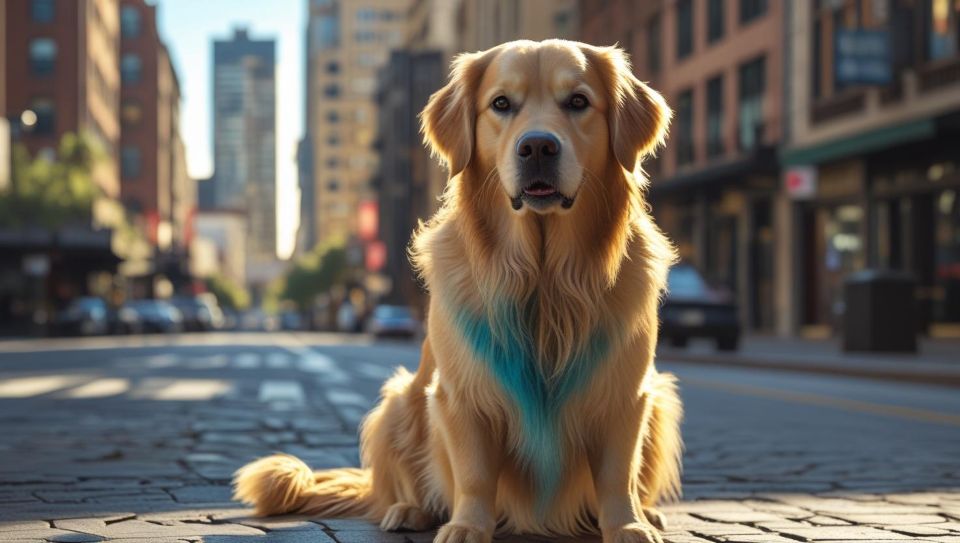
Post-Dye Care: Keeping Your Dog’s Coat Healthy and Vibrant
After dyeing your dog’s fur, proper aftercare is essential—not just for preserving the color, but also for maintaining your pup’s overall skin and coat health.
Avoid Frequent Baths
For the first week after dyeing, try to avoid bathing your dog to prevent the color from fading too quickly. When it’s time for a bath, opt for a pet-safe, color-protecting shampoo. These shampoos are specially formulated to be gentle and help lock in the dye, keeping your dog’s new look fresh for longer.
Maintain Coat Health
Regular brushing does more than keep your dog looking good—it stimulates blood circulation and helps distribute natural oils, leaving the coat shiny and soft.
To support healthy hair growth from the inside out, consider adding nutrient-rich foods to your dog’s diet. Lean meats, eggs, and green veggies are excellent sources of protein, vitamins, and minerals that nourish the coat and improve its texture and strength.
Monitor for Any Reactions
Keep a close eye on your dog in the days following the dye job. Watch for any signs of irritation like itching, redness, excessive shedding, or swelling. If you notice anything unusual, don’t wait—consult a veterinarian right away to rule out allergic reactions or other skin issues.
Final Thoughts
Dyeing your dog’s fur can be a fun way to express your creativity and bond with your pet—as long as it’s done the right way. From choosing safe, pet-friendly dyes to prepping properly and following up with the right care, every step matters when it comes to keeping your pup healthy, happy, and looking their best.
Remember, your dog’s safety and comfort should always come first. So take it slow, pay attention to how they react, and never force the process. With a little patience and the right tools, you’ll be able to give your furry friend a fresh new look you’ll both love.
Whether you’re going bold for a pet parade or adding a pop of color just for fun, dyeing your dog’s fur can be a safe and exciting adventure—as long as you’re doing it responsibly.

